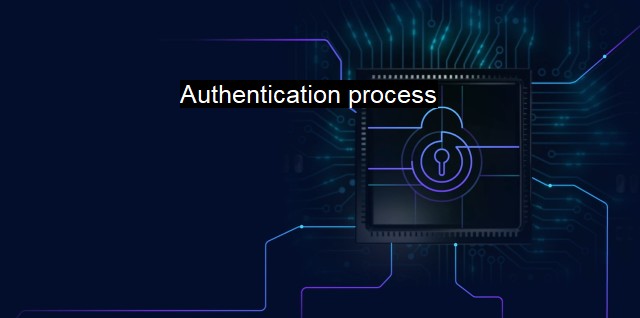What are Authentication process?
Importance and Function of Authentication in Cybersecurity and Antivirus Systems: Ensuring Genuine User Identity and System Security
Authentication is a tenet process in the cybersecurity landscape, proving to be pivotal for protecting systems, networks, and data from unauthorized access. Falling under the umbrella of access controls in the field of information security, the authentication process protects against breaches and system misuse by verifying the identity of the user or system based on the presented credentials.Conventionally, it is an intentional interaction where a party is validated to be who or what they claim to be. Ensuring the individual accessing is genuine, the procedure notifications a mountain of obligations, like safeguarding robust techniques that can block cybercriminal penetration.
The authentication process usually starts with the system asking the user or another system for valid credentials. These credentials are authenticated by comparing them with stored credentials in the system database. If the entered credentials match those stored in the database, the system verifies the identity of the user or the system and grants the appropriate level of access.
Mainly three types of authentication are commonly implemented by organizations: knowledge-based, unique identification-based, and location-based. Knowledge-based authentication requires users to provide something they know, such as a password, personal identification number (PIN), or answers to secret questions. Identification-based authentication requires something users have an identity card, smart card, or a software token. In location-based authentication, the system confirms users' physical location via an IP address or GPS data.
One-time passwords (OTPs) enhance the security level of the knowledge-based authentication, minimizing risks of a breach in the event original passwords are compromised. Biometric security measures, like fingerprint, facial recognition, or iris scans, are increasingly used forms of unique identification-based authentication.
Sessions cookies, IP location, and digital certificates are also integrated into the process of user authentication to improve the safety of online services, posing a hurdle for ill-intentioned activities. SSL Certificates, a prevalent form of digital certificate, are used to authenticate a website's identity and encrypt the data sent to the server.
A key tactic to boost user authentication process is two-factor authentication (2FA). It requires two different kinds of authentication: what users know (password or PIN), what users possess (smart card or mobile), and traits of users biometrics (fingerprint, facial-recognition technology). It establishes two protective layers, ramping up authentication security by making it challenging for attackers to gain illegitimate access.
One of the most advanced authentication models is adaptive authentication. It uses behavioral metrics like time, location, device used, and the nature of the transaction to calculate the risk level and determine the authentication requirements accordingly.
In the age of fast-evolving technology and clever cybercriminals, authentication builds the first line of defense compatible against cybersecurity threats. Be it securing email accounts, logging into computers, or safeguarding antivirus software from rogue implementations, it plays an integral role.
Treating antivirus software is equally essential to its consequences can pose as substantial cybersecurity risks. Authenticating access to configuration settings of antivirus software prevents unauthorized modifications that might lead to the disablement of the software, consequently exposing the system to malware attacks.
User Authentication also protects antivirus databases from unauthorized access, which can lead to the deletion or alteration of essential antivirus files that can render the antivirus software ineffective against malware. Understanding the impacts, combined with robust and advanced user authentication measures, can affectively safehouse any system or network.
The authentication process forms the backbone of cybersecurity architecture, reassuring that only authorized individuals and systems are allowed to access physical and digital assets. It thus performs the dual tasks of verifying the identification of the authorized users or systems and restricting access by verifying these credentials. Effective user authentication is integral to a comprehensive cybersecurity strategy – curbing unauthorized access, curtailing system misuse, and shielding key system components – thereby strengthening the overall security posture of an organization.

Authentication process FAQs
What is the authentication process in cybersecurity?
The authentication process in cybersecurity is the method used to verify the identity of an individual or device attempting to access a system or network. It is a critical component of cybersecurity as it helps to prevent unauthorized access to sensitive information and resources.How does the authentication process work in antivirus software?
In antivirus software, the authentication process often involves a combination of factors such as usernames, passwords, biometric data, and security tokens. The software verifies the identity of the user or device attempting to access the system or network before allowing access.Why is two-factor authentication important in cybersecurity?
Two-factor authentication is important in cybersecurity because it adds an additional layer of security to the authentication process. With two-factor authentication, users must provide two forms of identification, such as a password and a security token. This helps to prevent unauthorized access even if an attacker manages to obtain one of the forms of identification.What are some best practices for authentication in cybersecurity?
Some best practices for authentication in cybersecurity include using strong and unique passwords, implementing two-factor authentication, regularly updating and patching software, limiting access to sensitive information and resources, and monitoring for suspicious activity. These practices can help to enhance the security of the authentication process and reduce the risk of a cyber attack.| | A | | | B | | | C | | | D | | | E | | | F | | | G | | | H | | | I | | | J | | | K | | | L | | | M | |
| | N | | | O | | | P | | | Q | | | R | | | S | | | T | | | U | | | V | | | W | | | X | | | Y | | | Z | |
| | 1 | | | 2 | | | 3 | | | 4 | | | 7 | | | 8 | | |||||||